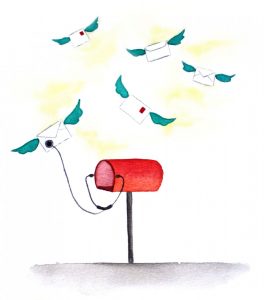What have been your experiences with journal clubs? It may depend on the group, your expertise and your stage of training, but overall, journal clubs can be a way to keep up to date on recent publications, read about studies through the perspectives of experts outside of your field and serve as a training opportunity for appraisal skills.

When I came to the Johns Hopkins University School of Medicine as a postdoctoral fellow, I switched fields of research; journal club has served as a way for me to navigate the dominant questions and themes in my new field. For those involved in clinical work — and therefore expected to know about various clinical trials — journal club can also serve as a bridge between the research literature and clinical practice.
The thought-provoking, lively journal clubs I have been to have usually included various viewpoints from people with different expertise. However, this can be difficult to achieve. One of the constraints of traditional journal clubs is real-time participation. But with the increasing use of technology, some groups are experimenting with using one or more social media tools, including Twitter, YouTube and Google Hangouts, to encourage journal club discussions.
The Wiki Journal Club is an online journal club that adds user-contributed edits directly to the page in the same wiki technology used by the online encyclopedia Wikipedia. Each entry represents a journal club meeting; includes citations, major points, criticisms and further reading; and evolves through stages labeled Incomplete, In Review and Published, with increasing online interactions and edits from users over time. The idea was originally conceived by Timothy Plante, now a clinical fellow in general internal medicine at Johns Hopkins, and David Iberri, a clinical assistant professor at Stanford University, when they were students and classmates at the University of Vermont College of Medicine.
Since the launch of the website in 2011, the number of entries and readership have grown by word of mouth. In addition, in April 2012 and March 2013, an app was released for use on iOS and Android devices, providing easily searchable clinical evidence summaries from the website. Revenue from app sales has been used to support website hosting, development and, more recently, honorariums for associate editors who contribute one or two entries per month.
As of November 2015, participants have contributed 243 entries. The highest amount of traffic to the site is on workday mornings, likely coinciding with patient rounds. Plante says that what they have created is not conceptually novel. “People have been writing summaries of influential clinical trials for a long time, but they end up in desk drawers,” he says.
What this project specifically offers is an openly accessible source of these summaries and an online collaborative learning environment. These features have contributed to the growth of number of entries and the site’s spread internationally. Furthermore, although this project was created for the medical culture, Plante notes, “there’s no reason this couldn’t be done in any field.”
So, how is the culture of journal club in your field evolving over time?